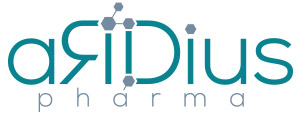Why Invest in Rare Diseases & Orphan Drugs?
manager2023-02-16T12:36:52+00:00In the run-up to Rare Disease Day 2019, David H. Crean, PhD, Managing Director for Objective Capital Partners, reviews the investment and deal activity for orphan drugs in 2018 and delves into future forecasts for the rare disease space.
With drugs currently available for only about 5% of rare diseases, the future is wide open for investment in orphan drug development projects.
Organizations around the world people are observing February 28, 2019, as the annual Rare Disease Day. The main objective of Rare Disease Day is to raise awareness amongst the general public and decision-makers about rare diseases and their impact on patients’ lives. In keeping with this theme, the objective of this article is to provide an overview of investment and deal activity in 2018 for companies involved with developing treatments for rare disorders which have taken centre stage for R&D, partnerships and M&A in 2018.
Rare Diseases and Orphan Drugs
There are approximately 7,000 rare diseases affecting 25−30 million Americans and 400 million worldwide. A large number of rare diseases remain without effective treatments despite over 500 orphan drug therapies having been approved by regulators in the United States. However, a growing focus by researchers and the Food and Drug Administration (FDA) on rare disease therapies have resulted in a dramatic increase in the number of new therapeutic options for these patients in the past two years. An orphan drug is a pharmaceutical product that treats a rare disease. The development of orphan drugs has been financially incentivized through US law via the Orphan Drug Act of 1983. The success of the original Orphan Drug Act in the USA led to it being adopted in other key markets, most notably in Japan in 1993 and in the European Union in 2000.
The creation of the orphan drug designation (ODD) with the passage of the Orphan Drug Act in 1983 has facilitated the development and approval of drugs for rare diseases, and years 2017 and 2018 were marked by the highest number of orphan drug and indication approvals to date. The FDA approved 80 new orphan indications in 2017 and 57 just within the first eight months of 2018, the highest numbers annually since the passage of the Orphan Drug Act.1
The number of orphan indications approved in the United States from 1983–2018, along with spending patterns in the USA for orphan drugs, are shown below. The combination of scientific advances along with accelerated product review and a growing commitment by policymakers to advance precision medicine is fueling the increased number of orphan therapies.
Read the whole article here: https://pharmaboardroom.com/articles/investments-and-deal-activity-in-orphan-drug-products/


Contact
ARDIUS PHARMA PC
44 Vouliagmenis Av.,Argyroupoli, 16452
Phone: (+30) 2114188613
Email: info@ardiuspharma.com

